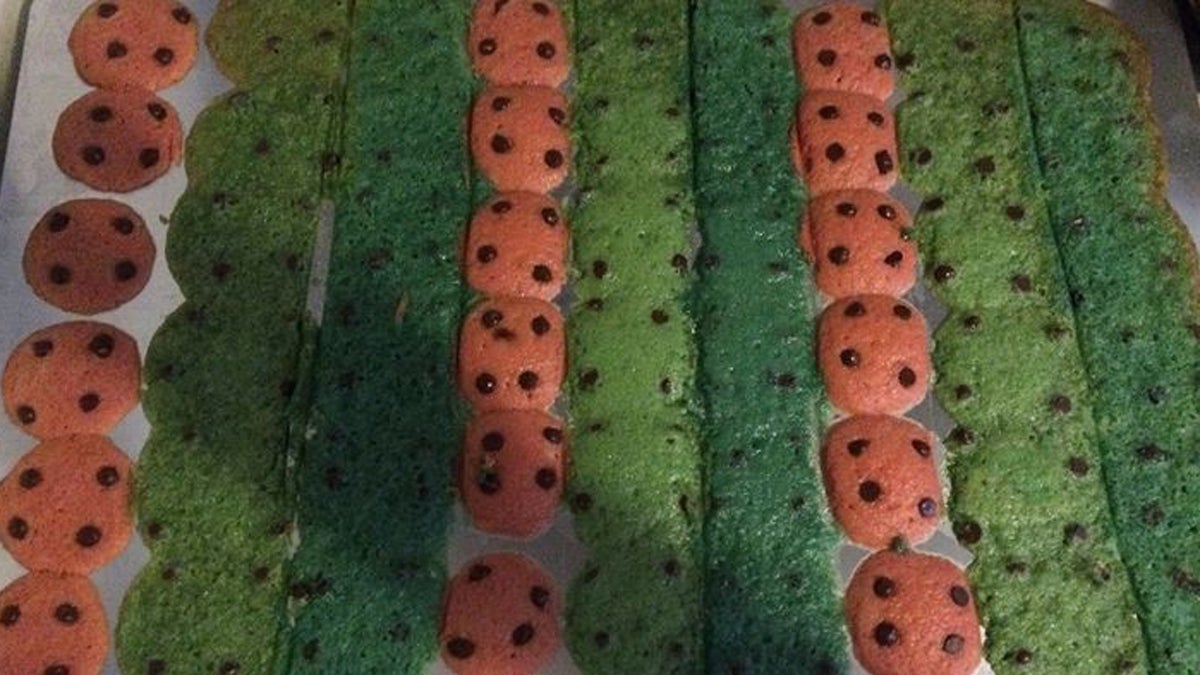How science plays a role in baking the perfect cookie
Listen
(Photo courtesy of Bethany Brookshire/Society for Science & the Public)
Dr. Bethany Brookshire wants people to get excited about science — and what better way to excite people than the possibility of consuming delicious cookies?
Brookshire, a regular Pulse contributor, is doing a project for the Eureka! Lab education blog called “Cookie Science” that she hopes will introduce regular people to basic scientific concepts like hypotheses and experimentation.
“The goal is to actually show people that doing a science experiment is just as close as your kitchen,” said Brookshire. “You just have to walk into your kitchen, ask yourself a question and find a scientfic way to answer it.”
To that end, Brookshire is designing a series of experiments that blog readers can emulate, all designed around cookie baking and everyday items found in the grocery store. For her first experiment, she wanted to see if she could share her favorite cookie recipe with a friend that has a gluten allergy.
“I want to make my cookies into a recipe so she can eat them. But that’s a goal, not a testable hypothesis,” said Brookshire. “So, I designed a hypothesis that states that replacing wheat flour with gluten-free flour in my cookie recipe will not be enough to create a good cookie.”
Brookshire says she read a bunch of scientific papers on wheat gluten and how it works, compared regular cookie recipes with gluten free recipes, and ultimately created several batches of cookies. One was designed as a “control group” — the normal recipe — and another with a kind of gluten free flour that she could use to “test” (or, more accurately, feed) unsuspecting friends to see what they thought.
“My goal, through a series of experiments, is to create a cookie that is as much like my control cookie as possible without containing gluten,” said Brookshire. The basic idea is simple — Brookshire recruited friends, co-workers and neighbors, (about 40 in all) as a test group to find out if her cookies are good or not. But she says she used the scientific method to go a step further and make sure that people’s differing tastes weren’t contaminating her results. She used a psychometric technique called a “Likert scale,” asking taste testers to rate cookie’s features — dryness, moistness, sweetness and overall taste — on a scale from 1 to 5.
“It allows me to separate those aspects out from whether or not people liked the cookie,” said Brookshire.
So did she create a better gluten free cookie? Well, Brookshire’s results are still pending. But the real question: Was this all just an excuse to bake and eat cookies?
“I wish it was an excuse for cookie baking, but cookie baking would be a lot easier actually,” said Brookshire. “I actually wrote a full scientific proposal, I got institutional review board approval to test on human subjects, I did the whole deal.”
And that friend with the gluten allergy? “She’s been very nice about it and very patient. I’ve promised her in a few months she can have her cookie.”
Are you hungry yet? Be sure to check out our 8 favorite cookie recipes inspired by science.
Brookshire is a writer for Science News and a regular contributor to The Pulse.
WHYY is your source for fact-based, in-depth journalism and information. As a nonprofit organization, we rely on financial support from readers like you. Please give today.



